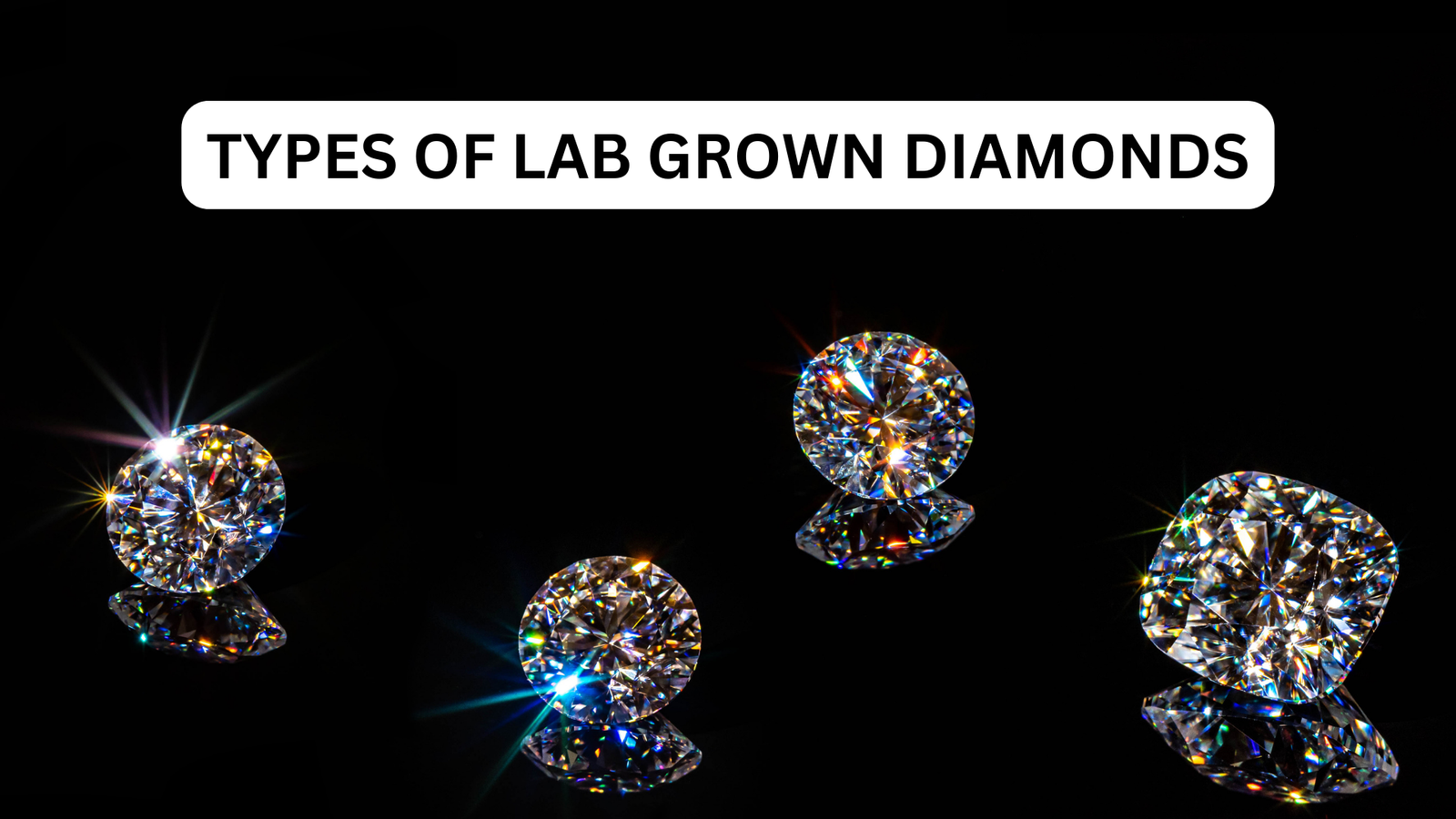Different Types of Lab Grown Diamonds | All You Need To Know

Lab-grown diamonds have revolutionized the jewelry industry, offering a sustainable and cost-effective alternative to naturally mined diamonds. In this article, we delve into the primary types of Lab Grown Diamonds. But before that, lets learn what are Lab Grown Diamonds.
What are Lab-Grown Diamonds?
Lab-grown diamonds are real diamonds produced in controlled environments using advanced technological processes. They share the same physical, chemical, and optical properties as their natural counterparts, yet different in their origin.
The Rise of Lab-Grown Diamonds
The jewelry market has seen a significant shift towards lab-grown diamonds in recent years. This trend is driven by their affordability, ethical sourcing, and minimal environmental impact, aligning with the growing consumer demand for sustainable and responsible choices.
What are the types of Lab Grown Diamonds?

There are mainly 2 types of Lab grown diamonds, they are Chemical Vapor Deposition (CVD) and High-Pressure High-Temperature (HPHT) diamonds
CVD Diamonds
CVD diamonds are created through a process where carbon-rich gases are used in a high-temperature, low-pressure environment. This method allows for precise control over the diamond’s properties, making CVD diamonds popular for their quality and consistency.
Click here so see our CVD Diamonds
HPHT Diamonds
HPHT diamonds are produced using a process that replicates the natural conditions of diamond formation. High pressure and high temperature are applied to carbon, resulting in beautiful and durable diamonds.
Click here so see our HPHT Diamonds
Quality and Characteristics

Both CVD and HPHT diamonds are evaluated based on the 4Cs: cut, color, clarity, and carat. They are virtually indistinguishable from natural diamonds to the naked eye and often surpass them in quality.
Environmental Impact
Lab-grown diamonds offer a more eco-friendly alternative to traditional diamond mining. They require less land disturbance and energy, contributing to a reduced carbon footprint.
Economic Benefits
One of the major advantages of lab-grown diamonds is their affordability. They provide consumers with high-quality diamonds at a fraction of the cost of natural diamonds.
Consumer Perceptions
The acceptance of lab-grown diamonds is on the rise. Consumers appreciate their ethical production and the transparency of their sourcing, leading to a positive shift in perception.
Choosing the Right Lab-Grown Diamond
When selecting a lab-grown diamond, it’s important to consider factors like certification, quality, and the specific characteristics of CVD and HPHT diamonds.
Maintenance and Care for Lab-grown diamonds
Lab-grown diamonds require the same care as natural diamonds. Regular cleaning and proper storage will ensure their longevity and brilliance.
- The Advantages of Lab-Grown Diamonds for Your Engagement Ring
- Lab-Grown Diamonds vs Natural Diamonds: What’s the Difference?
Conclusion
Lab-grown diamonds, particularly CVD and HPHT varieties, offer a compelling alternative to natural diamonds. They are not only beautiful and durable but also represent a step towards a more sustainable and ethical jewelry industry.
FAQs
- Are lab-grown diamonds real diamonds?
Yes, lab-grown diamonds are real diamonds with the same chemical, physical, and optical properties as natural diamonds. - How do CVD and HPHT diamonds differ?
CVD diamonds are created in a controlled environment using carbon-rich gases, while HPHT diamonds are formed under high pressure and high temperature, mimicking natural diamond formation. - Are lab-grown diamonds more affordable than natural diamonds?
Yes, lab-grown diamonds typically cost less than natural diamonds, making them a more accessible option for many consumers. - Do lab-grown diamonds have the same quality as natural diamonds?
Lab-grown diamonds can match or even exceed the quality of natural diamonds, especially when considering factors like clarity and color. - Is purchasing lab-grown diamonds an ethical choice?
Yes, lab-grown diamonds offer an ethical alternative due to their conflict-free origin and reduced environmental impact.





